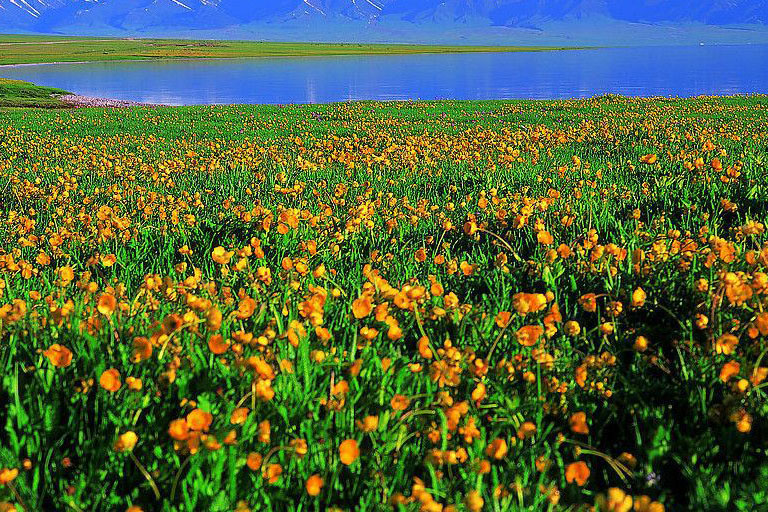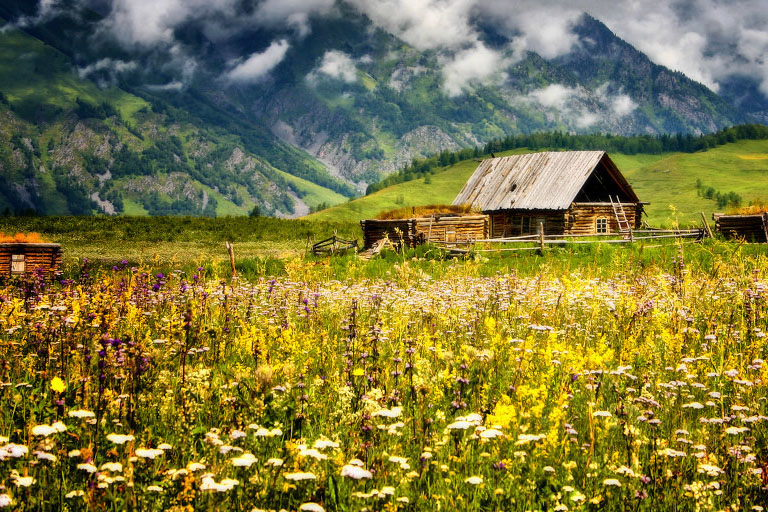China Tours & Private Packages - Discover the mistery of China with a Local China Travel Agency(TTC)
China Tours & Private Packages - Discover the mistery of China with a Local China Travel Agency(TTC)
Xinjiang is far away from the sea and is located deep inland with high mountains around it. The ocean airflow is not easy to reach, forming an obvious temperate continental climate. The temperature difference is large, and the sunshine time is sufficient (the annual sunshine time reaches 2500 ~ 3500 hours). The precipitation is small, and the climate is dry. The average annual precipitation in Xinjiang is about 150 mm, but the precipitation varies greatly in different regions. The temperature in southern Xinjiang is higher than that in Northern Xinjiang, and the precipitation in Northern Xinjiang is higher than that in southern Xinjiang. In the coldest month (January), the average temperature is below minus 20 °C in northern Xinjiang. The absolute minimum temperature on the northern edge of the basin once reached minus 50.15 °C, which is one of the coldest areas in China. In the hottest month (July), the average temperature in Turpan, known as "Flaming city", is above 33 °C, and the absolute maximum temperature once reached 49.6 °C, ranking first in China. Due to the great daily temperature difference in most parts of Xinjiang, it has always been said that "wear leather jacket early, wear yarn at noon, and eat watermelon around the stove".


In spring, it gets warm and receives more sunshine in the Spring of Xinjiang. The temperature of the underlying surface of the desert and Gobi increases rapidly, and the temperature rises rapidly. On the Tianshan Mountain and Tianchi Lake scenic areas, the wildflowers start blooming. Other recommended famous scenic spots include Bayinbrook grassland, Nalati grassland, Sayram Lake, and you will find a vivifying spring: blooming flowers, green grassland, and innumerable cattle and sheep. The weather condition in spring is frequent gales, sandstorms, and floating dust in spring, especially in the spring of Southern Xinjiang. There are a lot of dull and chaotic floating dust days, but after spring rain, apricot blossoms, peach blossoms, and pear blossoms are in full bloom. You can go to Apricot Valley aka Xinhuagou, Ili to see the romantic apricot blossoms on the grassland.
It is still very cold in the early spring and it is recommended to wear down jackets, sweaters, winter coats, winter boots in March and early April. From May, you can wear long skirts and sweaters, windbreakers, casual clothes, jackets, etc. Remember to put on thick layers for the cold night.

It is recommended to wear a sun block shirt, sunhat for the UV is very strong. Also, you need to bring cotton and linen shirts, thin skirts, thin T-shirts and other breathable clothes for the daytime and bring thick layers for the early morning and night. Winter outfits are needed when you are in the mountainous areas and nighttime.
Autumn in Xinjiang features relatively cool temperatures and frequent winds. Autumn in Xinjiang is characterized by fruits and autumn leaves. Here is a saying, "Turpan grapes, Hami melons, Korla fragrant pears, everyone praises". There are many varieties of melons and fruits in Xinjiang. Because of the large temperature difference between day and night, these melons and fruits are very sweet. October to November is also the best season to visit the Kanas Scenic Area to see the fall foliage, to cross the Taklimakan Desert, to travel along the ancient silk road, and to watch the golden Populus euphratica on the roadside.
It is recommended to wear shirts, long skirts and thin sweaters, windbreakers, casual clothes, jackets, sneakers for the early autumn, and winter coats (nighttime) and sweaters in late October and November. Since late October, you can wear more winter clothes to keep warm.
The winter in Xinjiang is very long and cold. The average temperature in January in the north of Northern Xinjiang is mostly below - 15 °C. The annual snow days in Northern Xinjiang are generally 25 ~ 45 days. Snow generally begins to fall in mid-October on the north slope of Tianshan mountain and the south foot of Altai mountain. The snow covers the middle and high mountains in winter and lasts for 5 ~ 7 months. Since the 1980s, Xinjiang has gradually carried out ice skating, skiing, ice sculpture, and many other winter activities with many nice ski resorts in the mountainous areas of Altay, and Urumqi.
It is recommended to wear winter coats, gloves, scarfs, leather jackets, down coats, woolen hats, sweaters, snow boots.
How to Get to Xinjiang: Urumqi is the transfer hub of Xinjiang, and it receives flights from Beijing (4h), Shanghai (5h), Xian (4h), Chengdu (4h), Chongqing (4h), Changsha (4.5h), Xining (2.5h), Dalian (4h), Guangzhou (4.5h), Lanzhou (2.5h), Yinchuan (3h), etc., as well as high speed trains from Xian (13.5h), Lanzhou(10.5h), Xining (9.5h), Zhangye (7.5h), Jiayuguan (6h), Dunhuang (4h), etc.
Best Time to Visit Xinjiang: It is available to visit Xinjiang all year round, but May ~ October is the best time for the most comfortable weather and most beautiful scenery
A longer Xinjiang trip is more recommended and worthwhile because of its large scale. Most travelers start a Xinjiang tour from Urumqi – the tourist distribution center equipped with convenient airlines. Some travelers also unveil a Xining experience from Kashgar – the transfer hub in southern Xinjiang.
A classic Xinjiang tour takes 6 ~ 8 days, including 2~3 days in Urumqi (Xinjiang Regional Museum, Nanshan Passture) and Heavenly Lake, 1~2 days in Turpan (Jiaohe Ancient City, Karez System, Bezeklik Thousand Buddhas… ), and 3 ~ 4 days in Kashgar (Kashgar Old City, Karakul Lake, Tashkurgan Fort…). Don’t miss Kanas - the God’s private garden, and it takes at least 3 full days to enjoy its beautiful lakes, bays, forests, rivers and villages.
Top 4 Xinjiang Tours chosen by most customers to explore Xinjiang in the best way. Check the detailed itinerary, or tailor your own trip now with us.
We are here to help you...
Start planning your tailor-made Xinjiang Tours with 1-1 help from our travel advisors.